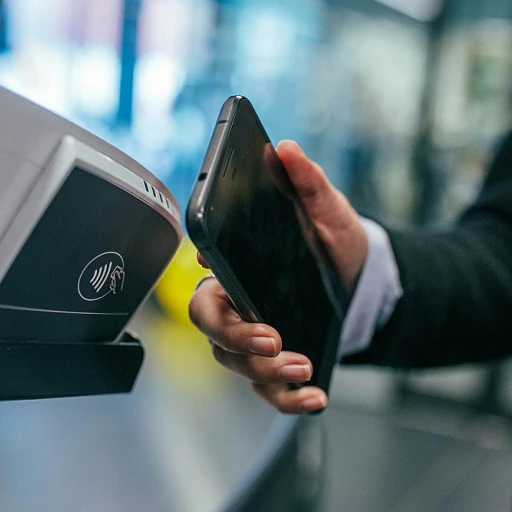
Understanding Procurement in Banking
The Role of Procurement in Banking: A Crucial Component
Procurement in the banking sector serves as a cornerstone for achieving operational efficiency and cost savings. As banks operate in a highly competitive environment, understanding the intricacies of the procurement process is essential. Financial institutions rely on sophisticated procurement strategies to acquire goods and services that support their business operations, ensuring that they maintain financial health while meeting the demands of their clients.
The procurement process in financial services involves a comprehensive evaluation of suppliers, striking a balance between cost and quality, and managing relationships with suppliers to sustain business performance. Banks need to adopt a strategic approach to procurement that involves both strategic sourcing and effective supplier relationship management.
As part of this strategy, banks must consider not only the costs associated with the procurement process but also factors like risk management, supplier track record, and category management. Ensuring supplier compliance with ethical and sustainability standards has become increasingly important, contributing to the overall sustainability journey of the financial industry.
Furthermore, as banking procurement evolves, leveraging technology becomes imperative for improving efficiency and transparency. Advanced tools and solutions help streamline procurement processes, enabling better decision-making and category management within the supply chain.
For those interested in exploring how strategic decisions can be influenced by innovative procurement approaches, particularly in the banking sector, the insights from exploring strategic impact are invaluable.
Key Challenges in Banking Procurement
Barriers Hurdling Financial Progress
In the banking industry, procurement is a critical part of business operations. It involves acquiring the necessary goods and services to support various banking processes. However, procurement in this sector is not without its challenges. One of the primary hurdles is managing the complexities inherent in the procurement process itself. Procurement banks often deal with a diverse range of suppliers and products services, creating a necessity for effective category management and strategic sourcing. This complexity can be heightened by stringent regulatory requirements specific to the financial services sector. These regulations can significantly impact procurement strategies, leading to increased costs and the need for meticulous risk management. Banks also face the challenge of maintaining supplier relationships that align with their strategic goals. The financial health of suppliers is paramount, as their track record can influence the avaiability and continuity of goods services. This necessitates a focus on supplier performance to ensure alignment with banking objectives. Moreover, the pressure to achieve substantial cost savings while enhancing procurement processes is another significant barrier. Balancing efficiency with cost-effectiveness, while navigating the diverse needs of different business units, requires a well-coordinated approach. Public perception and sustainability add another layer of complexity. Today, banks are closely scrutinized for their ethical practices. Banking sectors are increasingly expected to engage in sustainable procurement, which not only reduces environmental impact but also builds public trust. The challenges in banking procurement are multifaceted and require strategic management to overcome. Exploring the power of CFADS in strategic planning can offer valuable insights into optimizing procurement strategies effectively. linkStrategic Sourcing and Supplier Relationships
Building Effective Supplier Relationships for Optimal Performance
In the complex landscape of banking industry procurement, establishing strong and strategic supplier relationships is a key element in achieving streamlined operations and cost savings. Financial institutions, amid their strict regulatory environments, require a well-managed supply chain to ensure seamless procurement processes.
Strategic sourcing and supplier relationship management are crucial to enhancing the procurement performance of banks. Sector procurement strategies focus on identifying and collaborating closely with suppliers that offer goods and services critical to the bank's core functions. A robust track record in strategic sourcing can significantly boost a bank's financial health.
Banks need to view suppliers as partners in their business operations rather than merely transactional vendors. By employing category management, banks can optimize procurement strategies, focusing efforts on specific procurement categories to achieve better negotiation outcomes. This facilitates not only cost savings but also risk management.
Furthermore, fostering transparent and ethical supplier relationships aligns with sustainable procurement goals, ensuring that banks meet both financial and sustainability objectives. Public commitments to sustainability and ethical procurement are increasingly expected by stakeholders across the financial services sector.
Adopting a collaborative approach in the supplier management process helps banks to improve their procurement process efficiency, enhancing overall performance and ensuring the delivery of quality products and services. Proper management of these relationships is a backbone for the banking sector's long-term success.
Leveraging Technology in Procurement
Embracing Technological Innovations
In the ever-evolving banking industry, leveraging technology in procurement is not just a trend but a necessity. For procurement teams in banks, integrating digital solutions into the procurement processes can streamline operations and enhance efficiency. The strategic use of technology helps in managing the entire procurement cycle, from strategic sourcing to category management, allowing for better supplier relationships and cost savings.
One of the pivotal advantages of technology in procurement is its ability to facilitate more informed decision-making. Through data analytics, financial institutions can gain insights into supplier performance and financial health, essential for risk management and ensuring a reliable supply chain. These insights empower banks to optimize their procurement strategies, ultimately benefiting the business's bottom line.
Moreover, digital tools in the procurement process can drive sustainability and support ethical procurement practices, a rising priority within the sector. Tracking sustainable procurement initiatives becomes easier and more transparent with the right technology in place, enhancing accountability in public procurement sectors. This shift towards digitalization not only supports sustainability goals but also aligns with the broader objectives of financial services institutions seeking to improve their corporate social responsibility.
As banks embrace digital solutions, they must also be mindful of fostering collaboration between procurement and IT teams. Successful implementation of technology requires strategic alignment and continuous improvement of processes, which ensures that the procurement function remains agile and responsive to market changes.
In conclusion, leveraging technology in procurement stands as a cornerstone for banks aiming to secure competitive advantages in the financial sector. The digital transformation journey discusses here mirrors the broad-reaching impact that technology has on enhancing procurement efficiency, ensuring a resilient supply chain, and supporting sustainable procurement strategies within the banking industry.
Sustainability and Ethical Procurement
Embracing Sustainable Practices in Procurement
The growing focus on sustainability in the banking sector underscores the importance of ethical procurement practices. As financial institutions strive to align their operations with global environmental standards, integrating sustainable procurement within their processes has become a priority. This shift not only enhances a bank's public image but also contributes to long-term financial health by fostering improved supplier relationships. Embedding sustainability into procurement strategies involves a comprehensive assessment of the supply chain, identifying areas where sustainable practices can be implemented. It's essential for procurement teams in banks to champion transparency and accountability in dealings with suppliers, ensuring that their goods and services align with sustainability benchmarks and ethical standards. Implementing category management can facilitate the prioritization of sustainable products and services, enabling banks to make more informed decisions regarding their procurement processes. By focusing on categories with the highest environmental impact, banks can maximize their sustainability efforts and drive meaningful change across the sector. Risk management plays a pivotal role in sustainable procurement, as banks must evaluate the potential risks associated with their suppliers’ practices. Monitoring a supplier's track record for ethical performance and environmental compliance is crucial for maintaining a robust, responsible supply chain. Incorporating sustainable procurement strategies not only promotes ethical business practices but can also lead to significant cost savings. By optimizing the procurement process and encouraging strategic sourcing, banks can reduce waste, improve efficiency, and ultimately enhance their competitive edge in the sector. Procurement banks have a unique opportunity to lead by example, demonstrating how the integration of sustainability and management standards within procurement can drive both financial and environmental benefits. As the banking industry continues to evolve, prioritizing sustainability will be integral to ensuring long-term success and resilience.Future Trends in Banking Procurement
Innovation and Forward Thinking in Procurement Strategies
The banking industry is constantly evolving, and procurement strategies must adapt to keep pace with the dynamic environment. Financial institutions are beginning to recognize that the future of procurement lies in a mix of technology, innovative practices, and sustainability commitments. Here's how banks can stay ahead in the procurement game.
- Embrace Digital Transformation: As banks increasingly rely on digital platforms for a variety of services, integrating advanced technology into procurement processes can greatly enhance efficiency. Automation, data analytics, and AI-driven insights are transforming how procurement teams within the sector operate, streamlining the procurement process and offering greater transparency and control.
- Focus on Sustainability: There is a growing shift towards sustainable procurement, where financial institutions are not only focused on cost savings but also on the environmental and social impact of their sourcing strategies. Banks are incorporating sustainability criteria into supplier evaluations and are more vigilant about supporting suppliers who prioritize ethical business practices. This approach not only contributes to corporate responsibility goals but also helps improve the bank's public image.
- Adopt Strategic Sourcing Models: As mentioned earlier, strategic sourcing and strong supplier relationships are central to effective procurement management. In the future, banks will increasingly rely on strategic partnerships with suppliers that offer innovative goods and services, ensuring high performance and reducing risks across the supply chain.
- Enhance Risk Management: Risk management remains a core focus for procurement strategies in the banking sector. By leveraging technology to better anticipate and mitigate risks within the supply chain, financial services can enhance their resilience and maintain financial health even in challenging times.
- Advocate for Cross-Sector Collaboration: The integration of public and private sector best practices in procurement can yield significant benefits. Collaborative initiatives across sectors can lead to shared insights and innovations, ultimately propelling the banking industry's procurement processes to new heights.
In conclusion, the future of procurement in the banking sector is set to be defined by a strategic blend of technological advancement, sustainability commitments, and innovative supplier management. By focusing on these areas, banks can not only optimize their procurement strategies but also achieve long-term business success and cost savings."













